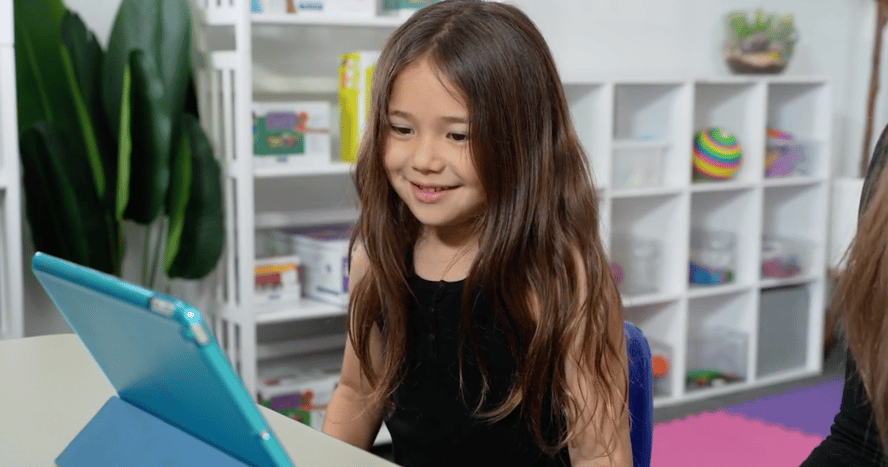
And…action! As there is growing awareness about autism, the media is also increasingly portraying characters with autism and those who are on the spectrum. How autism is portrayed in entertainment can have a significant impact on how our society understands people with autism. While some representations can be stereotypical and misleading, others can be more complex and realistic, showing the diversity and multidimensional humanity of people who are on the spectrum.
Some characters on TV appear to have high functioning Autism Spectrum Disorder (ASD) but they have not been “officially” diagnosed. Sheldon Cooper on “The Big Bang Theory,” Dr. Temperance Brennan of “Bones,” and Abed Nadir on “Community” all demonstrate characteristics of ASD. Show producers worry that if they indicate a character has ASD they will have to “get it right,” or that they might lose audience share. In fact, everyone benefits when characters are honestly depicted and all types of people are portrayed. When the creator of “Community,” Dan Harmon, researched the character of Abed Nadir, he benefited by discovering that he too had characteristics of ASD.
The documentaries, movies, and shows reviewed below are not without their flaws, but they help spread awareness about the unique traits and abilities, joys and hardships, along with achievements of those with autism.
A is for Autism is an eleven-minute animated documentary commissioned by British broadcaster Channel Four. The short was intended to provide insight into the lives and experiences of individuals with autism by allowing them to speak for themselves. With animations developed using drawings by contributors with autism layered with a soundtrack of their thoughts and recollections, the film is truly a collaborative effort that opens a small window into alternative perceptions. While the experiences of various speakers are diverse, the director is able to thematically organize their narratives, using layer upon layer to convey a sense of life with autism that transcends essentializing. While the filmmaker worked with higher functioning individuals with autism and did not represent a wider range of experiences, it is a remarkable achievement for its direct and relatable portrayal.
Arthur: George and the Missing Puzzle Piece (2009)
Arthur is an animated television series for children that aired a fifteen-minute segment entitled “George and the Missing Puzzle Piece” about the character Carl, George’s new friend, who draws beautiful images of trains and is very honest. George tells the story of how he met his friend. At first, he did not know that Carl has Asperger’s Syndrome and George struggles to understand Carl’s behavior. Another friend tells George that his award-winning uncle has Asperger’s and offers an analogy of what it is like living with autism. He explains that it is like landing on an alien planet that looks like earth but has lots of differences. While people speak your language, they can talk very loudly and sometimes you cannot understand them. Other times, you think something is funny while they do not. The show presents a hopeful portrayal of friendships and fitting in with autism and can potentially serve those struggling to understand the condition.
Sesame Street and Autism: See Amazing in All Children (2015)
Sesame Street Workshop has collaborated with organizations such as Autism Self Advocacy and Autism Speaks to develop a nationwide initiative to reduce the stigma of autism. Their newest muppet Julia, a character who has autism, is voiced by a girl on the autism spectrum. Developed for an audience of children between the ages of 2 and 5 along with their families, the initiative offers videos and other digital content such as apps and storybooks that helps educate kids as well as their parents on how to have successful interactions with children who have autism. The initiative emphasizes that we should “see amazing in all children.”
Mary and Max is an animated feature film about a pen-pal relationship between a 44-year old New Yorker who has Asperger’s and a lonely 8-year old Australian girl. The story is based on the real story of a friendship spanning 20 years and hundreds of letters between Adam Elliot, the Australian director of the film, and a middle-aged pen pal from Staten Island. We see the characters’ worlds through their own eyes as they deal with complex issues like alcoholism and parental neglect with frankness and empathy. While the film depicts the power of human connection and friendship, it also recognizes the real challenges that can distance relationships. The film shows characters who are colored but not defined by the conditions they have.
This HBO biopic depicts the life of Temple Grandin, a renowned animal behavior scientist who has autism. The film shows how Grandin perceives the world through concrete images rather than words and struggles with sensory overload. As she encounters new challenges, she is able to find ways to overcome them. For example, she invents a squeeze machine that can substitute physical contact with other humans. She also leverages her abilities to design more humane slaughterhouses and writes books that re-conceptualize autism. The film portrays how people with autism can make significant contributions to society and continue to change and grow throughout their childhood as well as adulthood.
Autism: The Musical is a feature length documentary that challenges preconceptions about what young people with autism can and cannot do. In the movie, a theater program brings five children with autism spectrum disorders together to create a performance using their diverse abilities. The film alternates between documenting the development of performance and delving into the backgrounds of each child. The children featured reflect the gender ratio of 4 boys to 1 girl as well as ethnic diversity and a range on the spectrum.
Fly Away portrays the relationship between Jeanne, a single mother and Mandy, her sixteen-year-old daughter with severe autism. The film deals with difficult topics such as the Jeanne’s dependence on her daughter to give her own life meaning as she sacrifices aspects of her romantic and professional life to care for her daughter. In the meantime Mandy’s increasingly aggressive behavior and developing interest in the opposite sex become difficult to manage. The film reveals the relationship between mother and daughter with all of its imperfections, depth, and love.
When Thomas and his family move to a new neighborhood, he wants to fit in and have a normal adolescence. Put in charge of his autistic brother Charlie, Thomas finds that his pent-up frustrations about his brother begin to pour out. With the support of his girlfriend Jackie, Thomas learns to unconditionally accept his brother and helps Charlie accept himself. The movie confronts the dynamics of love and acceptance in the family in a way that is painful yet tender and hopeful.
The Story of Luke is a film about a 25-year-old man with autism who sets out to find a job and fall in love after his grandmother and caretaker passes away. The film explores misperceptions about those with autism, especially adults, who often want the same things as everyone else like living independently and having a relationship. He transforms the perceptions of those around him who initially look down on him, showing them how much he has to offer and teach them. The movie shows the importance of recognizing the talents and needs of people with autism.
What are your favorite films and TV shows about autism? We’d love to add them to our list!





